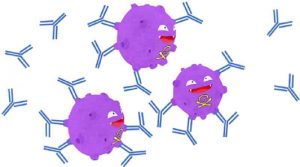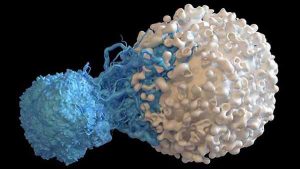Immune system
Many viruses fail to break through the barrier of the body, but a bit of them are succeed and multiply beneath us, causing infection. When this happens, our immune system fights back. The immune system identifies new germs as enemies and attacks them directly. It also remembers them in the future, giving us protection against the diseases they cause. Our immune system do the major work.
How antibodies kill germs
Chemical antibodies attach to germs such as bacteria, which they call for destruction. There are different types of viruses, and each type of antibody detects one of them. Fortunately, the human body can produce about ten billion different antibodies, ensuring that there is an antibody to match all the viruses you have ever encountered.

Infect
The virus enters the body and begins to multiply. It is carried by body fluids to the lymph node.
Detect
Within the lymph node, various antibody cells affect the virus in an attempt to detect different molecules on their surface. Eventually, a cell with the same molecule sees the virus as an enemy and attaches itself to it.
Activate
The equivalent body cell is now active and producing an army of clones. It also produces “memory cells”, which will stay in the body for years, ready to launch a rapid attack if the same virus comes back.

The clone makes the antibody resemble unique molecules in the bacterial body. Wherever they found the same germs, they stuck to them.
Destroy
The antibodies that act as a beacon to white blood cells are known as phagocytes, which destroy and swallow germs.
How killer cells work
Killing cells act less like antibody cells, but instead of releasing antibody molecules into the bloodstream, they travel into the bloodstream itself and attack their own specific target. While the antibodies attack the bacteria, the killer cells focus on attacking the cancer cells and immune cells captured by the virus.
Cancer
The cancer cell breaks down the tumor and carries body fluids to the lymph node.
Detect
Killer cells in the lymph node touch the cell and try to identify the molecules on their surface. Eventually, a cell with the same molecule identifies the cancer cell as an enemy and attaches itself to it.
Activate
The killer cell forms an army of clones. It also makes the memory cells, which will stay in the body for years, ready to launch a rapid attack if the cancer returns.

Seek
Large numbers of adjoining cells leave the lymph node and move through the body, looking for cancer cells that resemble their surface molecules.
Destroy
When the killer cells find the cancer cells, they attach themselves to them and kill them with poison.
Vaccinations
Your body usually protects itself from infections only after you have overcome them. However, you can also be protected by being given a vaccine. Vaccines contain mutated germs that do not make you sick but stimulate the immune system, and build up memory cells.
Must Read – Stem Cell
